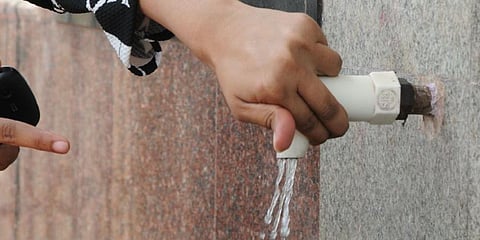

BHUBANESWAR: Fall in water level in at least 41 per cent (pc) monitoring wells in Bhubaneswar could be the first hint at rapid depletion of groundwater table of the State Capital. The statistics of Water Resources department under Ministry of Jal Shakti on groundwater level in urban areas reveal that of the 17 wells analysed for water level fluctuation in the city, there has been a decline in the water table in seven. In the seven wells, the drop is in the range of zero to two metres.
Besides, out of 19 wells analysed to measure water level depth, four had zero to two metres below ground level (mbgl), while nine had two to five mbgl. Six also had water level at 5 to 10 mbgl. The depth of water in the city usually remains at 1.2 to 8.1 mbgl, the data suggests. However, the remaining 59 pc monitoring wells have reported a rise in water level compared to 2019.
The Central Ground Water Board (CGWB) sources said the average requirement of water in the State Capital as of 2020 is around 422 MLD of which groundwater could meet only 112 MLD at present compared to 206 MLD in 2010. The over-dependency is affecting the level of groundwater in different parts of the city as the CGWB report had earlier revealed that the groundwater level in Saheed Nagar which was 4.4 metre in 2006 decreased to 5.3 metre in 2015.
Sources said the water level may have decreased further in the last five years as the Directorate of Ground Water Survey and Investigation (DGWS&I)’s survey report shows that average groundwater level in entire Khurda district has fallen to 6.81 metre in 2019 from 6.17 metre in 2004. DGWS&I sources said the load has increased substantially over the years due to thriving borewells.
While statistics of Water Corporation of Odisha (Watco) suggest that the city has around 2,948 tubewells, the DGWS&I sources said the actual figure could be much more given the rate at which new projects are coming up.